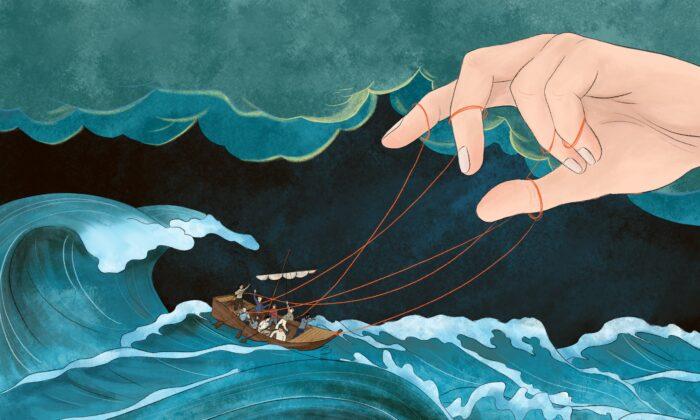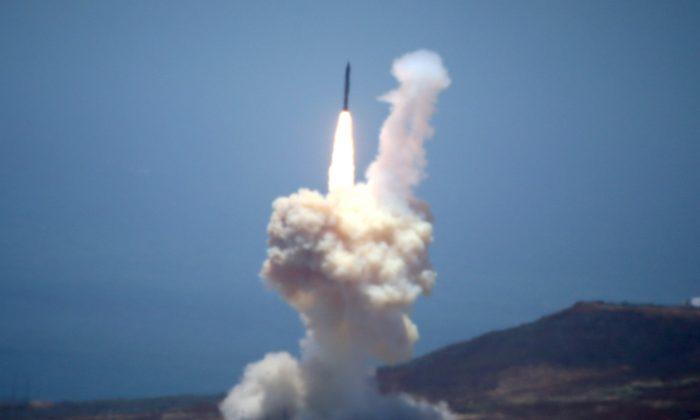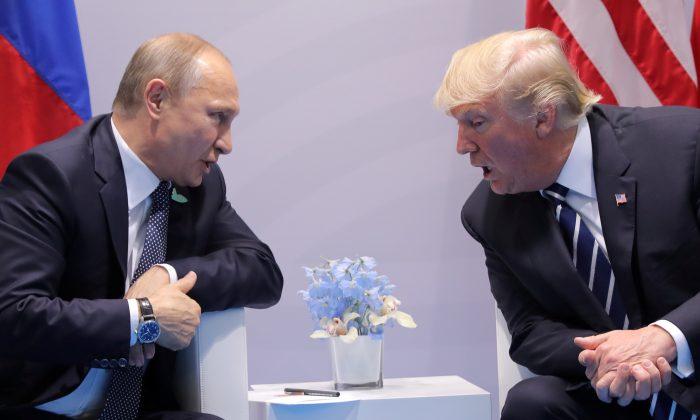
TORONTO–It was the kind of tightly scripted broadcast typical of state-run television in China. The narrator introduced the story: “Incited and masterminded by the Dalai Lama clique, a few criminals did beating, smashing, looting, and arson in downtown Lhasa, causing huge damage to people’s lives and property.”
Statements like this one, which opened a March 23 documentary on the unrest in Tibet, have been beamed into the homes of Chinese Canadians over the last two weeks via the communist regime’s China Central Television 4 channel, which airs on Rogers Cable.
Last week, CCTV 4’s segments on Tibet ranged from a few to 15 minutes in length and aired up to eight times a day. Each presented a one-sided account of events inside Lhasa since protests began there March 10.
Contradicting reports that police had violently crushed the protests, CCTV 4 said Chinese authorities had used “maximum restraint,” not retaliating under attack, not cursing when criticized.
Followers of the Dalai Lama, however, were described repeatedly as “lawless rioters,” purveying “atrocities” on innocent people, who were quoted professing their “hatred” of the protesters.
“Their sinister intentions are to take advantage of the occasion of the forthcoming Beijing Olympic Games to undermine the stability and unity of the social environment, in an attempt to split Tibet from the motherland,” the narrator surmised.
Soft Power
Once confined to mainland China’s media, the communist party line has now become dominant in Chinese-language media overseas. Broadcasting agreements like the one with Rogers and expanding influence over many Chinese-language press have helped Beijing get its message out.
The effects of such coverage can be seen in a rally being planned in Toronto’s Dundas Square this weekend.
An organizer of the “anti-violence” rally, who asked to be identified only as Chris, says the event seeks to tell the “truth” about Tibet.
A flyer promoting the event includes still images from CCTV with captions like “‘Peaceful’ Tibetan protesters set fire to Lhasa secondary school. 90 % classrooms destroyed.”
“The violence [is] created by the Tibetan people,” Chris said in an interview. “They are against all the other ethnic people; they just want to drive everyone out … The Chinese government didn’t do anything wrong.”
Chris, like other Chinese, says he trusts some of the largest Chinese daily newspapers in Canada, like Sing Tao Daily, to tell him what’s really happening in Tibet.
Financial Ties
But many of the Chinese-language press have also in recent years adopted editorial slants closely in line with the Chinese regime.
The Jamestown Foundation, a U.S.-based non-partisan think-tank that monitors threats to democracy and freedom, analyzed Beijing’s influence on overseas Chinese media in 2001.
It found that three of the four major Chinese newspapers published in the U.S., the Sing Tao Daily, Ming Pao Daily News, and The China Press, were under the direct influence of the Chinese communist government.
The fourth, World Journal, is run by a parent company in Taiwan and had increasingly given in to pressure from Mainland China, Jamestown said.
Three of those newspapers, Sing Tao, Ming Pao, and World Journal, also have Canadian editions.
“As preparation for Hong Kong’s return to China in 1997, the Chinese government made vigorous attempts in the early 1990s to purchase several major media agencies in Hong Kong. This was done through the use of third-party merchants who have close business ties with China,” said the report.
In the case of Sing Tao, the regime provided financial help to then-owner Sally Aw Sian, who ran into a financial crisis in the late 1980s, Jamestown said. What followed was the paper’s transformation into a pro-communist paper that even saw a former editor of The People’s Daily (the Chinese regime’s official mouthpiece) take the helm.
Though in Canada Sing Tao is now majority owned by TorStar, which also owns the English-language Toronto Star, the Canadian outfit receives China news from the parent Sing Tao company in Hong Kong.
Today, most of the largest Chinese-language newspapers in Canada carry pro-Beijing journalism very similar to that found in communist China. (The notable exception is the Chinese edition of The Epoch Times. ) The latest protests in Tibet provide many examples.
Familiar Words
The Epoch Times reviewed dozens of articles from The World Journal, Ming Pao Daily and Sing Tao Daily and found a consistent pattern of reporting that parroted the Chinese communist party’s line on events unfolding in Tibet. The papers relied heavily on Chinese government sources and used inflammatory quotes throughout their reports.
Police were depicted repeatedly as non-violent and almost passive, “extremely restrained,” and “not fighting back when being bitten.” Early reports described soldiers as being present but rather than suppressing protesters they were claimed to be “sweeping the road and cleaning the streets.” ( Sing Tao, March 15, 18)
Tibetans, meanwhile, were consistently depicted as violent, vicious, and responsible for beating police to death. (Ming Bao, March 21) Other reports blamed Tibetans for killing innocent civilians.
Coverage in the papers consistently repeated Beijing’s line that the Dalai Lama was behind the “severe criminal violence” in Tibet–and the regime’s claim that there was ample evidence to prove this–without citing what the evidence was.
The newspapers also frequently adopted terms used by the Chinese state-run media to describe the events in Lhasa, referring to the Tibetan government in exile as the “fake government” and using the more violent word “riot” instead of “protest” or “unrest.”
In the final analysis, the articles create the impression that restrained police were doing their best to contain violent, anti-Chinese Tibetans who were part of a well-coordinated attack on Chinese residents, soldiers and police in Lhasa. The articles lacked the context for the protests and depicted Tibetans as wildly engaged in “robbing, burning, and killing” during what would otherwise be Tibet’s “best time in history.” ( World Journal, March 16, 17)
The message appears to be getting through. Many Chinese people in democratic countries, including Canada, believe Tibetans are completely to blame for the unrest.
An article in the World Journal said the organizers of the “anti-violence” rally had received thousands of comments on their web page.
Human Rights
This has China human rights activists concerned.
“We are pretty disturbed by the fact that Chinese people around the world including in Canada are so misinformed,” said Michael Craig, Chair with the China Rights Network.
Mr. Craig noted that while many Tibetans have been killed and now “hundreds and hundreds” have been arrested, letters in the Globe and Mail that day revealed Chinese people in China and Toronto are up in arms about what they consider to be violent separatists in Tibet.
“It’s a terrible shame that the propaganda of the Chinese government is working,” he said.
University of British Columbia Tibet scholar Tsering Wangdu Shakya says apart from that, some Chinese may see supporting the crackdown as a “good opportunity to toe the party line.”
“The more you cooperate with the government the more you are seen as a good person,” he said, adding that visible participation may help Chinese students to get better jobs on returning to China.
But while Chinese media have depicted the protests as being engineered by the Dalai Lama and violent secessionists, Shakya says the true reason lies in a growing gap between the rich and the poor that has come about as the regime has encouraged Han Chinese flood into Tibet, marginalizing the Tibetan people.
“They [the Chinese media] spin the story as anti-Chinese riots, instead of anti-government riots,” says Shakya. “They try to make it something against the Chinese people. It is not against the Chinese people.”
Shakya said the largest gap between the rich and poor in China is within Tibet. Communist cadres are at the rich end, while average Tibetans at the poor, he says.
But grievances such as these are not mentioned in the Chinese media reports reviewed by Epoch Times staff for this story.
Which may explain why Chinese immigrants like Chris, who rely on such coverage are so convinced. Chris says his event has “received a lot of support.”
Meanwhile, Tibetan supporters in Canada see the situation from an entirely different angle. Lobsang Khedup, president of Tibetan Youth Congress summed it up.
“Chinese people are suffering like us under the communist regime.”



